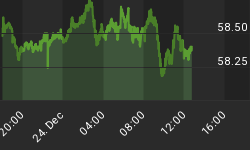10 Questions for Precious Metals Investors
-
Is the financial crisis in the Western world over?
-
Have the G20 countries balanced their budget?
-
Did the commercial banks manage to become solvent?
-
Are (real) interest rates positive or negative?
-
Is a global competitive devaluation to increase exports still ongoing?
-
Is the European periphery still financially challenged?
-
Do the Asian countries still have a cultural affinity with precious metals?
-
Which are the US budgetary issues and solutions?
-
Are the derivatives from large banks still a problem for economies and client portfolios?
-
Can liquidity solve the issue of insolvency?
If these are the questions, then gold and silver are two good answers.
But, let's approach these questions from a different direction.
-
Have gold or silver ever defaulted?
-
Do gold or silver have counter-party risk like EVERY paper investment?
-
On January 1, 2000 the Dow was about 11,500, gold was priced at $289, and silver was priced at $5.41. As of May 24, 2013, those numbers were: Dow: 15,303, gold $1,386, silver $22.49. Which was the best investment?
-
Gold fell (in 21 months) from over $1,900 to about $1,320. Does that mean the gold bull market is over? The Dow crashed from 14,100 (October 2007) to about 6,500 (March 2009), and then rallied back to new highs. Don't exclude the possibility of new highs for gold and silver in the coming months.
-
Why are Chinese businesses, individuals, and their central bank buying gold as rapidly as possible? Why does the Chinese government refuse to allow any gold to be exported? Why does China (world's largest gold producer) additionally import a massive amount of gold every year?
-
Ask the same for Russia, India, and much of Asia. What do they know about the VALUE of gold that the EU and the USA (who are selling gold) don't understand?
Further:
-
Gold and silver have gone up and down, when priced in unbacked paper currencies. The same is true for trucks, diamonds, the Dow Index, laundry detergent, gasoline, cigarettes, and wheat. Price increases and volatility will continue.
-
Gold, silver, and the national debt have increased exponentially since Nixon severed the link between the dollar and gold in 1971. All three will continue to rise. Gold and silver will occasionally rally too far and crash, while the national debt will increase until politicians no longer enjoy spending other people's money.
-
Goldman Sachs (and many others) have said gold is in a bubble. The same individuals and groups probably did not see the bubble in Internet stocks and housing. Do you trust them or the 3,000 years of history during which gold and silver have been real money and a store of value?
-
If JP Morgan (and others) can make huge profits using computers, complex mathematical algorithms, and High-Frequency-Trading, then they will. Often their trading temporarily drives the prices for gold and silver down. After the markets have been driven far enough down, the same trading process is used to drive the prices higher. Expect it!
-
Silver has dropped from about $49 (April 2011) to just above $20 (May 2013) - almost a 60% drop in price. Does that mean it will continue to drop more - perhaps to $10? Silver has retained its value, on average, for 3,000 years but has fallen in price for two years. On the basis of price action in those two years, most individuals (based on sentiment measures) have chosen to trust unbacked paper currencies issued by an insolvent central bank and an insolvent sovereign government instead of silver. This is typical of market bottoms, even if it is not sensible.
-
About 4.5 years ago (October 2008) silver crashed to a price bottom where "everybody felt" like it was hopeless to expect silver to rally again. About 4.5 years before that (May 2004), silver also crashed to a price bottom where "everybody felt" like it was hopeless to expect silver to rally again. But, in fact, the silver rally off the low in 2008 was over 450%, and the rally off the 2004 low was over 175%. Silver will rally again.
-
We may not trust bankers and politicians to effectively run the country, but we can trust them to "print money" and to spend in excess of their revenues. Consequently, we should trust them to drive the prices, as measured in unbacked paper currencies, for gold and silver - MUCH higher.
Read from the DI: Silver Lows: A Discernible Pattern
Read from the DI: Motive, Means, & Opportunity in the Gold Market
Read from Theodore Butler: Blockbuster in Gold
Read from Eric Sprott: Where is the gold coming from?
















